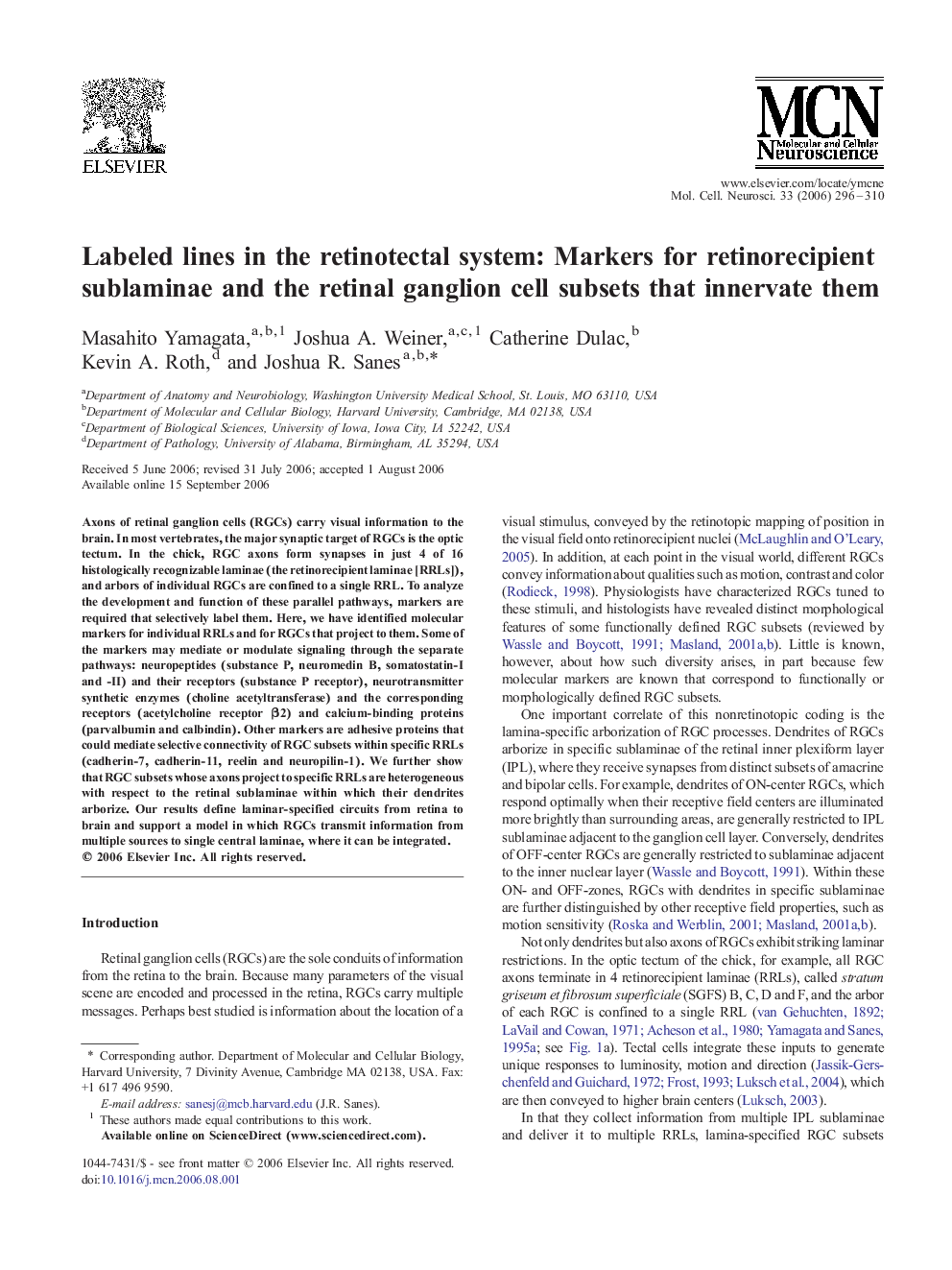| Article ID | Journal | Published Year | Pages | File Type |
|---|---|---|---|---|
| 2199548 | Molecular and Cellular Neuroscience | 2006 | 15 Pages |
Axons of retinal ganglion cells (RGCs) carry visual information to the brain. In most vertebrates, the major synaptic target of RGCs is the optic tectum. In the chick, RGC axons form synapses in just 4 of 16 histologically recognizable laminae (the retinorecipient laminae [RRLs]), and arbors of individual RGCs are confined to a single RRL. To analyze the development and function of these parallel pathways, markers are required that selectively label them. Here, we have identified molecular markers for individual RRLs and for RGCs that project to them. Some of the markers may mediate or modulate signaling through the separate pathways: neuropeptides (substance P, neuromedin B, somatostatin-I and -II) and their receptors (substance P receptor), neurotransmitter synthetic enzymes (choline acetyltransferase) and the corresponding receptors (acetylcholine receptor β2) and calcium-binding proteins (parvalbumin and calbindin). Other markers are adhesive proteins that could mediate selective connectivity of RGC subsets within specific RRLs (cadherin-7, cadherin-11, reelin and neuropilin-1). We further show that RGC subsets whose axons project to specific RRLs are heterogeneous with respect to the retinal sublaminae within which their dendrites arborize. Our results define laminar-specified circuits from retina to brain and support a model in which RGCs transmit information from multiple sources to single central laminae, where it can be integrated.
